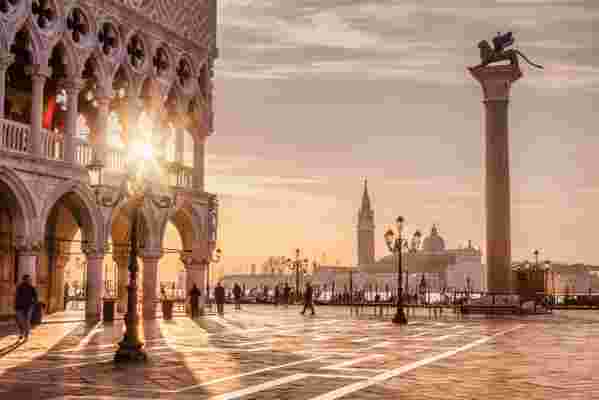June 09,2022
5 Architectural-Heritage Sites at Risk from Sea-Level Rise
by David Stewart
Last week, NOAA released its annual Arctic report , which revealed that rapid warming over the past three decades has led to a 95 percent decline of the region's oldest and thickest ice. While melting Arctic sea ice won't immediately lead to sea-level rise (since Arctic ice is already in the ocean, it won't change the sea's volume), warmer temperatures in the Arctic could: Higher temperatures cause oceans to expand in volume, and as glaciers, like those on Greenland , begin to melt, sea levels worldwide are going up. As a result, many coastal areas are at increased risk for flooding, storm surges, and erosion.
The news is just the latest in what seems like a near-constant stream of negative environmental announcements. In October, the International Panel on Climate Change Special Report called for urgent and unprecedented changes to mitigate the global effects of climate change. Later that same month, the science journal Nature published an in-depth report on UNESCO World Heritage sites in the Mediterranean at risk from coastal hazards due to sea-level rise.
The fallout projected in these studies is far-reaching, but for architecture and design lovers, they mean that many beloved structures, neighborhoods, ruins, and even entire cities are in danger of deterioration or being lost altogether. To allow such buildings or areas to deteriorate or disappear—due to climate change or any other force—would be tragic not only to those who admire their beauty and legacy but to the cultural and historical connections that unite humankind the world over.
Losing any of these sites would constitute “a dramatic loss for humanity,” says Mechtild Rössler, director of UNESCO’s World Heritage Center. “Such losses do not only concern the disappearance of some of the most exceptional sites on the planet, they also affect people’s link to the past, their identity, their resilience, and our collective knowledge.”
Below are five cherished architectural sites with high coastal risks. All happen to be on UNESCO's (World Heritage List https://whc.unescorg/en/list/), and to deprive future generations of their gifts would be to impoverish the intellect of all mankind.
1. Hagia Sophia, Istanbul

Once a Christian Orthodox church, later an Ottoman mosque, and now a museum, the stunning Hagia Sophia signifies Istanbul's famous history as a crossroads between Eastern and Western cultures under one massive dome. Istanbul's low elevation, however, means it could see up to two feet of sea-level rise by 2100, putting its historic areas at risk of serious and increased flooding.
2. Venice, Italy

The entire city of Venice and its lagoon are considered a World Heritage site, but massive flooding has already submerged the city in hip-deep water multiple times. Though a massive retractable barrier has been installed to protect it from storm surge, scientists say floods as deep as eight feet could occur within 80 years.
3. The Heart of Neolithic Orkney, Orkney Islands, Scotland

On this archipelago off the coast of Scotland, roughly 3,000 Neolithic monuments represent some of the world's oldest-known structures—many were constructed before Stonehenge or Egypt's pyramids. These stone houses, Norse halls, and Viking tombs have survived here for 5,000 years, but now, eroding beaches and cliffs threaten to destroy about half of them.
4. The White City of Tel Aviv—The Modern Movement, Tel Aviv, Israel
After emigrating from 1930s Nazi Germany, Jewish architects built more than 4,000 buildings in this fascinating neighborhood of Tel Aviv. Designed in the Bauhaus style yet uniquely suited to their climate and culture, the area stands as an outstanding tribute to the era but is at high risk from erosion.
5. The Statue of Liberty, New York, New York
In 2012, Hurricane Sandy left most of Liberty and Ellis islands under water, causing roughly $77 million in damage. It took eight months for Liberty Island to reopen, and the National Park System has stated that climate-related strain will “become more common and intense” for Lady Liberty, a colossal 19th-century technical achievement and ongoing symbol of hope to millions.
RELATED: Unlikely Victims of Climate Change Include Major International Airports






